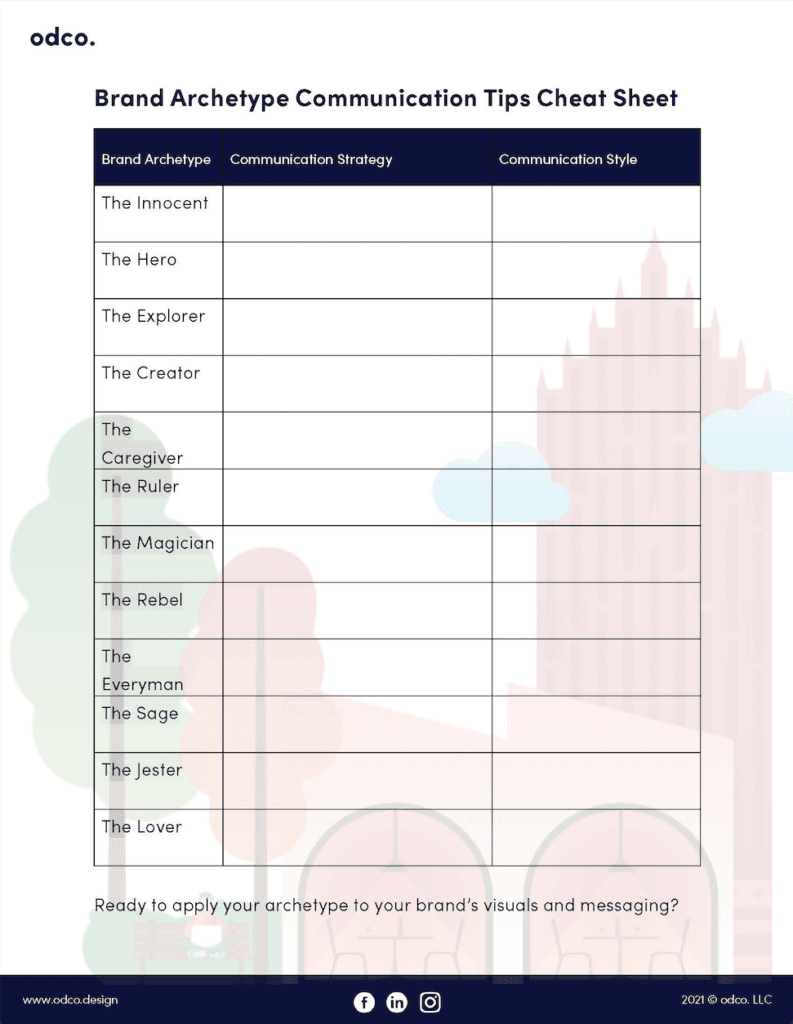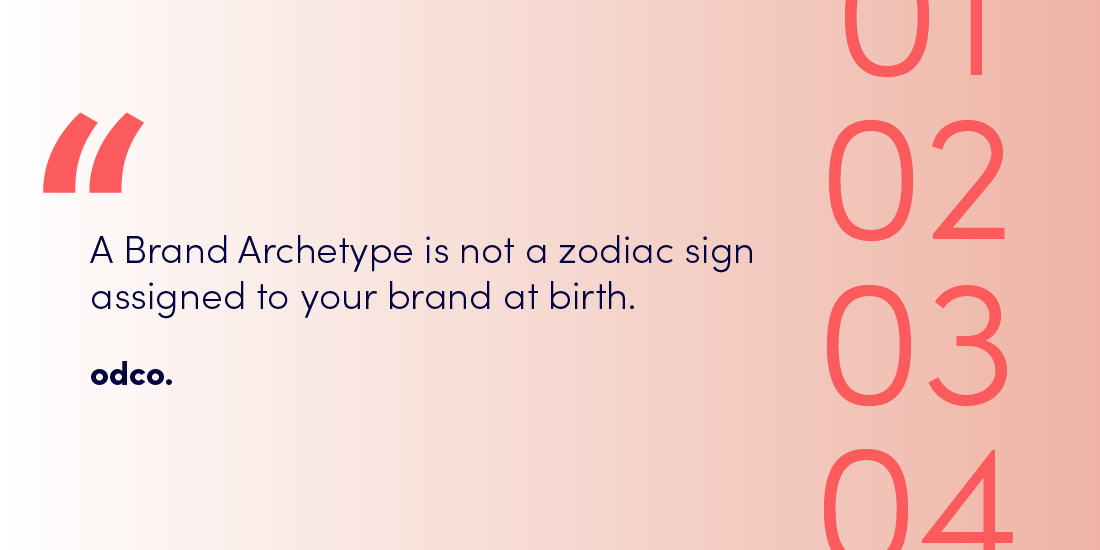Why is it, that some brands are dearer to our hearts than others? Why do we feel loyalty, connection, and sometimes even love for them? When no matter what, another brand alternative just won’t cut it.
Is it because they have massive marketing budgets, and their ads work like magic? Maybe, but an ad is just a part of something much deeper that goes beyond logic and is hardwired into our psyches.
The answer is the Brand Archetypes.
What are brand archetypes?
Back in the early 20th century a Swiss psychologist Carl Jung theorized that humans use symbolism to better understand complex concepts. Jungian archetypes are defined as images and themes that derive from the collective unconscious, have universal meanings across cultures, and are present in literature, art, and religion.
These archetypes exhibit personality traits that are easily understood. When properly established, brand archetypes reflect the identity of brands and naturally attract customers with specific personality types and desires.
There are 12 basic brand archetypes
Brand Archetype | Corresponding Human Desire | Brand Archetype Key Characteristics & Values | Brands’ Examples |
The Innocent | Safety | Optimism, honesty, humbleness, safety, simplicity, happiness | Aveeno, Herbal Essences, Dove |
The Hero | Mastery | Courage, development, growth, mastery, inspiration | Nike, BMW, FedEx |
The Explorer | Freedom | Adventure, discovery, exploration, liberation, the unknown, freedom | Patagonia, The Northern Face, Jeep |
The Creator | Innovation | Originality, vision, creation, self-expression, imagination, innovation | Lego, Apple, Adobe |
The Caregiver | Service | Support, service, recognition, gratitude, compassion, generosity | Johnson & Johnson, TOMS, UNICEF |
The Ruler | Control | Structure, control, power, wealth, prosperity, success, status, superiority | Rolex, Louis Vuitton, British Airways |
The Magician | Power | Vision, belief, knowledge, discovery, transformation, power | Disney, Absolute, Coca-Cola |
The Rebel | Liberation | Liberation, change, independence, righteousness, revolution | Virgin, Harley-Davidson, Diesel |
The Everyman | Belonging | Connection, belonging, inclusion, togetherness, equality | IKEA, Target, Gap |
The Sage | Understanding | Wisdom, mentorship, influence, information, expertise, understanding | Google, BBC, Harvard University |
The Jester | Enjoyment | Humor, positivity, laughter, happiness, enjoyment | Old Spice, Ben & Jerry’s, M&Ms |
The Lover | Intimacy | Passion, love, romance, intimacy, sensuality, indulgence | Victoria’s Secret, Chanel, Alfa Romeo |
There are 12 basic brand archetypes:
Brand Archetype | The Innocent |
Corresponding Human Desire | Safety |
Brand Archetype Key Characteristics | Optimism, honesty, humbleness, safety, simplicity, happiness |
Brands’ Examples | Aveeno, Herbal Essences, Dove |
Brand Archetype | The Hero |
Corresponding Human Desire | Mastery |
Brand Archetype Key Characteristics | Courage, development, growth, mastery, inspiration |
Brands’ Examples | Nike, BMW, FedEx |
Brand Archetype | The Explorer |
Corresponding Human Desire | Freedom |
Brand Archetype Key Characteristics | Adventure, discovery, exploration, liberation, the unknown, freedom |
Brands’ Examples | Patagonia, The Northern Face, Jeep |
Brand Archetype | The Creator |
Corresponding Human Desire | Innovation |
Brand Archetype Key Characteristics | Originality, vision, creation, self-expression, imagination, innovation |
Brands’ Examples | Lego, Apple, Adobe |
Brand Archetype | The Caregiver |
Corresponding Human Desire | Service |
Brand Archetype Key Characteristics | Support, service, recognition, gratitude, compassion, generosity |
Brands’ Examples | Johnson & Johnson, TOMS, UNICEF |
Brand Archetype | The Ruler |
Corresponding Human Desire | Control |
Brand Archetype Key Characteristics | Structure, control, power, wealth, prosperity, success, status, superiority |
Brands’ Examples | Rolex, Louis Vuitton, British Airways |
Brand Archetype | The Magician |
Corresponding Human Desire | Power |
Brand Archetype Key Characteristics | Vision, belief, knowledge, discovery, transformation, power |
Brands’ Examples | Disney, Absolute, Coca-Cola |
Brand Archetype | The Rebel |
Corresponding Human Desire | Liberation |
Brand Archetype Key Characteristics | Liberation, change, independence, righteousness, revolution |
Brands’ Examples | Virgin, Harley-Davidson, Diesel |
Brand Archetype | The Everyman |
Corresponding Human Desire | Belonging |
Brand Archetype Key Characteristics | Connection, belonging, inclusion, togetherness, equality |
Brands’ Examples | IKEA, Target, Gap |
Brand Archetype | The Sage |
Corresponding Human Desire | Understanding |
Brand Archetype Key Characteristics | Wisdom, mentorship, influence, information, expertise, understanding |
Brands’ Examples | Google, BBC, Harvard University |
Brand Archetype | The Jester |
Corresponding Human Desire | Enjoyment |
Brand Archetype Key Characteristics | Humor, positivity, laughter, happiness, enjoyment |
Brands’ Examples | Old Spice, Ben & Jerry’s, M&Ms |
Brand Archetype | The Lover |
Corresponding Human Desire | Intimacy |
Brand Archetype Key Characteristics | Passion, love, romance, intimacy, sensuality, indulgence |
Brands’ Examples | Victoria’s Secret, Chanel, Alfa Romeo |
The 4-step approach to uncovering your brand archetype
A brand archetype is not something that your brand just happens to fall into. It’s not a zodiac sign assigned to your brand at birth.
Contrary to the idea of assigning a brand archetype based on what you, as a business owner, identify with, we invite you to employ a very strategic and deliberate process based around your key audience (ideal customer) with the goal of creating a real, almost human-like connection with them.
Step 1
Understand your customer’s basic human desire
In other words, why is your customer seeking your service or product? Let’s take a web design agency as an example. A customer wants a new website because the old one is no longer relevant and doesn’t represent the business well. There can be a couple of basic human desires behind that want, like Belonging – my competition has a great looking website and I stand out; or Power/Superiority – I want to look better than my competition because my product/service is better.
The desire you uncover may not be the exact match to the words used in the table above, and the goal is to align with the closest related concept.
Step 2
Match your customer’s basic desire (or broad desires) to an archetype
Now that you understand your customer’s why, you can match it with a Brand Archetype. If you are a health and fitness brand and your core audience wants growth and self-development, then the Hero will give them what they are looking for. On the other hand, if your audience is all about optimism, happiness, and being down to earth, the Innocent archetype may be the right fit for your brand.
Your customers may have a core desire that doesn’t define their personality. But knowing the desire will help you select the best archetype and position your brand in the market with the goal of evoking that desire with your product/service offerings.
Step 3
Consider adopting a secondary archetype
If you are in a highly competitive market, some of your competition may be strategic enough to adopt an archetype. It would not be to your advantage to be one of many Everymen in your niche. To set yourself apart, consider adopting a secondary archetype. To make sure your brand is not diluted, it is not recommended to mix more than two archetypes. The primary should be 70%, while the secondary – 30%.
In other words, if all of the Pet Hotels on the block have positioned themselves as the Caregivers, add 30% of the Explorer or the Jester to stand out.
Step 4
Give your brand a personality
To connect with your customers in a really meaningful way, your brand needs a personality. It needs an outlook on life, opinions, and beliefs. Once you have selected an archetype or a mix of two archetypes, go through an exercise of answering key questions your customers would ask from your brand’s perspective. The questions your customers may want to hear answers to include:
- What is different about you and why should I pick you?
- What value do you bring?
- Why do you do what do?
- What is one thing you would change in your industry?
This can be a really powerful exercise resulting into opinions and beliefs of your brand being translated into how it communicates with the customers. The personality of your brand becomes aligned with the basic desires of your audience, transforming the transactional relationships into customer loyalty over years to come.
How can brand archetypes benefit me?
Simply applying the archetypal framework to your business will put your brand miles ahead of your competition.
Aligning your brand as much possible to a single archetype will equip your brand with personality that will feel familiar to your audience. Your brand’s communication style will transform from a boring sales copy to consistency and humanity of a real person with opinions, attitudes, and language similar to the ones of your customers. And that alone is a great differentiator.
There are hidden advantages of adopting a brand archetype that go beyond attracting your ideal customers. The archetypal branding helps business owners recognize and appreciate the real human value of their products and services, and makes their brands come alive and become instantly relatable.
Once you have your archetype in place, applying it to your brand’s visuals is the next step. Contact us to get started.
Want to learn more about brand archetypes?
- Check out the book “The Hero and the Outlaw: Building Extraordinary Brands Through the Power of Archetypes” by Margaret Mark and Carol S. Pearson
- Visit http://www.carolspearson.com/archetypal-branding/
Want to get tips on how to successfully communicate with your customers based on your Brand Archetype?
Get our FREE Brand Archetype Communication Tips Cheat Sheet

